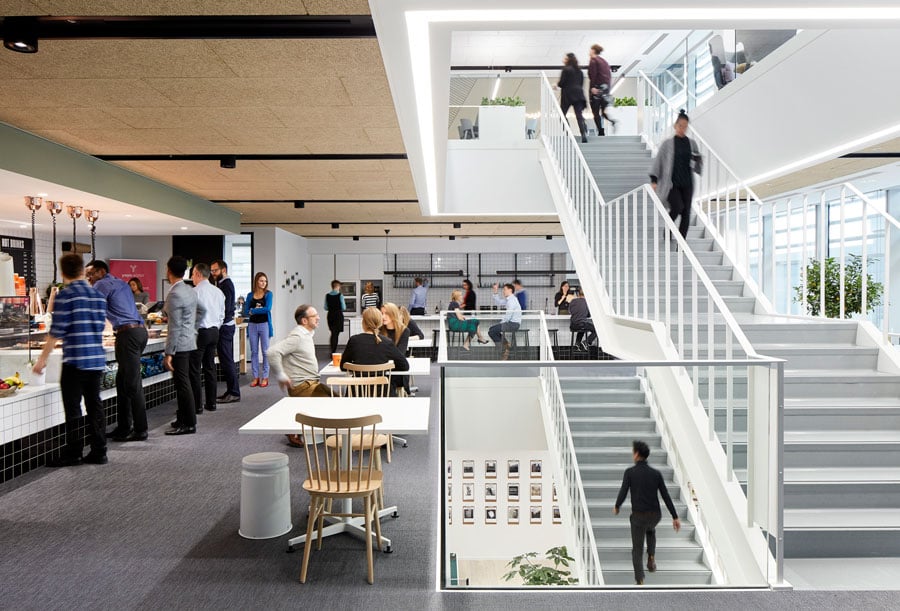
September 15, 2020
The Science Behind Healthy Workplaces
A recent Think Tank shed light on how designers can and can’t help keep workers healthy.

Develop new touchless technologies, establish better cleaning protocols, and give employees greater freedom to choose where and how they work—these were some of the major suggestions that arose when four leaders in workplace design gathered for “The Science Behind Designing Healthy Workplaces,” a Metropolis virtual Think Tank discussion held on August 20. All participants stressed the importance of innovation, and the need to avoid creating environments that take away choice and personal dignity.
“We have the immediate health crisis and then the long-term issues of human well-being,” said Avinash Rajagopal, editor in chief of Metropolis and moderator for the webinar. “We have to think of them together.”
Focusing on the relevance of people-centered design, Brett Hautop, senior director of global design and build at LinkedIn, recounted stories of some companies asking employees to face the wall when riding an elevator. “We thought that was completely inhumane,” he said. He went on to explain that LinkedIn has solicited ideas from its Chinese locations on how to orient stairways so they stand out as a viable alternative to elevators.
https://vimeo.com/452563232/9a74c5ca36
Pointing to the massive adoption of remote work during the COVID-19 pandemic, Hautop asked rhetorically, if future decisions to work at the office are up to employees, how can designers make the experience healthier and amenable to interacting with people directly? “There has to be a ‘What’s in it for me’ in order to come into the office. We want to create a workplace that makes you healthier—be it in your home or in your office.”
Brian Graham, founder and creative director of Graham Design in San Francisco and a furniture expert, stated that with increased concerns about health, there is going to be a shift in materiality and cleaning. “It’s also an irony that in some respects we want a touchless environment, yet in most places we crave touch and interaction with other human beings.” Ultimately, it’s the desire to connect face-to-face more than material selections that will draw people back to the office.
Martha Boss, risk management department leader at AECOM and a workplace hygiene expert, pointed out that when it comes to cleaning, materials are not one-dimensional. Some interior materials that are easy to clean, such as stainless steel, actually collect oil from our hands and fingerprints, which can host microorganisms and viruses.
“Office and hospital cleaners have become essential workers,” she continued. “We have to appreciate all they do.” But we also have to change ingrained habits: “For example, now we know that vacuuming offices, once standard procedure, is a way of spreading COVID-19. Get clients to think about the basics.”
The Think Tank discussions were held on August 6, 13, and 20. The conversations were presented in partnership with Design TV by SANDOW, B+N Industries, GROHE, KI, Material Bank, and Versteel.





